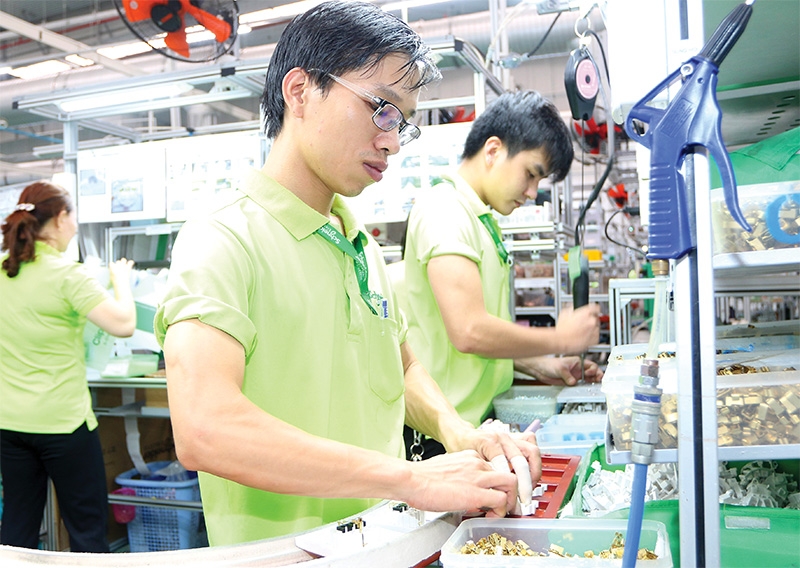Practical ideas to transform EVFTA into true success story
 |
| By Andreas Stoffers Friedrich Naumann Foundation for Freedom Vietnam |
We organised an excellent event together with the MoFA, both in terms of content and in technical terms. The provincial governor, many high officials, and representatives of the economy had come, and more than 200 people from administration, business, and the media followed the lectures of the EU–Vietnam Free Trade Agreement (EVFTA) specialists.
Then came this question. I suddenly realised that more than ever it is now absolutely necessary to work on taking the step “from macro level to micro level” and to take a very pragmatic approach to impelling the EVFTA for this My Tho businessman and his colleagues all over Vietnam. I would like to share my ideas on how to “put the horsepower on the road” in order to make the EVFTA a success story.
But let’s start from the beginning. In this year of EVFTA ratification, COVID-19 was a real game-changer, because the pandemic and the worldwide measures against it created a veritable crisis, which can be compared not with the 2008 financial crisis, but more with the Great Depression 90 years ago. The crisis hit the global economy to the bone. In these times of dealing with the massive worldwide economic downturn after COVID-19, the positive impact of the EVFTA on Vietnam is even more obvious than before.
There are many mutual benefits of this new-generation FTA (and the accompanying EU-Vietnam Investment Protection Agreement, or EVIPA), such as better trade opportunities, more investment and advantages because of diversification of trade partners, and lifting of standards making sure that Industry 4.0 and digitalisation can work well. These advantages are obvious, absolutely correct, and already often discussed.
Nevertheless, the EVFTA will not change much without further action. Rather, after the many correct but very sweet words that have been spoken about the benefits, it will be necessary to put words into action. Without a concerted implementation plan, even this FTA, which is in itself excellent and modern, will not be able to bear fruit.
I am definitely not alone in this opinion. Earlier this month I had a vivid discussion with German lawyer Oliver Massmann of Duane Morris. I also exchanged views on this with economic experts in Vietnam from the European Chamber of Commerce in Vietnam (EuroCham), the European and Vietnamese business community, from the Polish and German embassies, and many others.
All were convinced that the EVFTA was the light at the end of the pandemic tunnel, but that there was still much to be done, especially now that the agreement had been ratified.
 |
| Enterprises of all sizes will be seeking to maximise their potential gains through the new free trade deal, Photo: Le Toan |
Essential steps
In my view, this implementation plan should comprise three stages. Firstly, the existing information campaigns such as those run by the MoFA, the EuroCham, and the Vietnamese media should be continued. The seminars and conferences taking place in this context will help to increase awareness of the economic importance of the EVFTA in political, administrative and business circles at high flight level.
However, more work should be done on publicity in the EU countries than before. In addition to the national chambers of commerce and business associations in the EU, it is primarily the Vietnamese embassies which must become more active here. Good examples are the very remarkable activities of the Thai Board of Investment in Europe or the German-Malayan Business Round Table organisation in Germany.
Secondly, sector- and region-specific business events should then take place in Vietnam. In any case, the EuroCham, the EU national chambers of commerce, and business organisations as well as the economic departments of the embassies should be involved from the European side.
A breakdown by industrial sector makes sense, as the expectations of companies in the footwear industry, for example, are different from those of a trading company. It is important to consider region-specific aspects when organising these events, as the business community in the Mekong Delta has different interests than those in the Red River Delta or the Central Highlands region.
Comparable information events should also be available in Europe more than before, such as those organised by the German Federal Association of Small- and Medium-Sized Enterprises (SMEs), as happened recently in Berlin in co-operation with the Vietnamese Embassy.
However, the third and essential point, which I believe has been neglected so far, is the creation of practical examples of successful co-operation. If these lighthouses exist, the entrepreneur’s question asked at the beginning about the very concrete possibilities almost answers itself. Indeed, he could see that his peers can certainly succeed in deriving great benefits from the EVFTA.
A few examples of best practice are sufficient here. Subsequently, this PR activity could set impulses for further development. But how can this be realised? First of all, it is a matter of identifying suitable companies with the help of the MoFA and the Vietnam Chamber of Commerce and Industry. Ideally, these companies should be private SMEs, as large companies need less micro-support and cannot be used as an example for the many SMEs in Vietnam. Ideally, they should come from Hanoi or Ho Chi Minh City, as it is easier for EU partners to support them later. It is sufficient if there are only three to six companies on this shortlist in order to provide valuable individual support. The companies themselves must be open for business with the EU, have no EU contacts until now and have a healthy and transparent business.
Close co-operation
With the help of Vietnamese and European co-operation partners such as the EuroCham, and business organisations, these companies are then trained and prepared. Topics should include company-specific EVFTA regulations, cross-cultural management, networking opportunities in Vietnam and the EU, introduction to the relevant players (for instance the EuroCham), potential partner database (for example Bavaria International), best practice examples, preparing company presentations and documents, individual coaching, and matchmaking.
Parallel to this, potential partner companies in the EU will be specifically sought via the European chambers of commerce and state institutions and approached for individual matchmaking. The aim is to ultimately establish two or three successful medium-sized EU-Vietnamese co-operations, which will then be marketed as lighthouses with high publicity. A decade ago, it was the German-Vietnamese sausage company Duc-Viet which encouraged other companies to follow its example as best practice.
Our foundation is already in initial talks with relevant stakeholders in Vietnam and the EU to implement this three-stage strategy. The starting point should be this summer in order to reach tangible results by the end of this year or early next year.
As for its ASEAN chairmanship, Vietnam has already set an example by managing the COVID-19 pandemic very successfully. Now it will be important to set the course for a recovery from the post-pandemic economic crisis. With a powerful and successful implementation of the EVFTA, Vietnam can also set an example for free trade, which the other ASEAN member countries will follow. This is particularly important in times of emerging global protectionism. The EVFTA can even become a model for a corresponding EU-ASEAN agreement, but only if action is taken now.
Comprehensive sector-specific training, matchmaking events and the creation of distinctive beacons of co-operation between Vietnam and the EU will make the EVFTA a success story. If implemented in this way, there will be no more obstacles to Vietnam’s successful repositioning, and Vietnam will leave a remarkable footprint this year in all aspects, from dealing with the pandemic to the ASEAN chairmanship and the launch of the EVFTA. Matchmaking conferences can also be held on site in this context as soon as this is possible again.
What the stars mean:
★ Poor ★ ★ Promising ★★★ Good ★★★★ Very good ★★★★★ Exceptional
Themes: EVFTA & EVIPA
Related Contents
Latest News
More News
- Takeda supports health resilience amid climate change challenges (December 18, 2025 | 12:39)
- Mondelez Kinh Do - a chapter of purpose-led leadership in Vietnam (December 18, 2025 | 09:44)
- VNPAY services receive the highest-level PCI DSS international security certificates for six consecutive years (December 17, 2025 | 23:47)
- PPL extends its reach into ASEAN (December 17, 2025 | 15:44)
- Over 600 BUV graduates meeting quality benchmarks across triple quality assurance levels (December 17, 2025 | 13:00)
- HEINEKEN Vietnam partners with Ho Chi Minh City Traffic Police on road safety drive (December 17, 2025 | 09:42)
- BUV and China’s CSCSE sign MoU to boost educational cooperation (December 17, 2025 | 08:00)
- PVT Logistics honoured with ‘Fast Enterprise Award’ at APEA 2025 (December 16, 2025 | 18:22)
- Empowering Sustainable Data Centers with Smart Infrastructure Solutions (December 16, 2025 | 13:59)
- Vietjet wins gold ESG transport sustainability award in Taiwan (China) (December 13, 2025 | 22:03)

 Tag:
Tag:






















 Mobile Version
Mobile Version